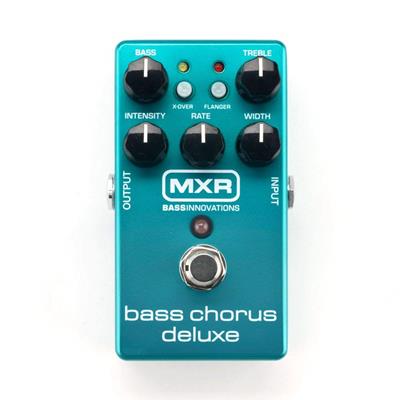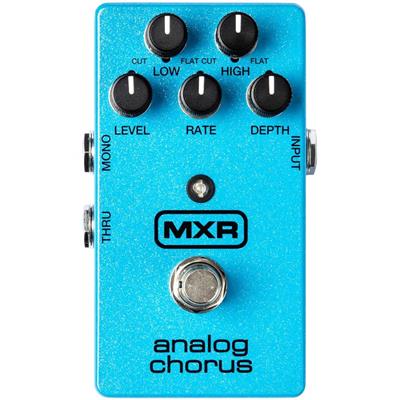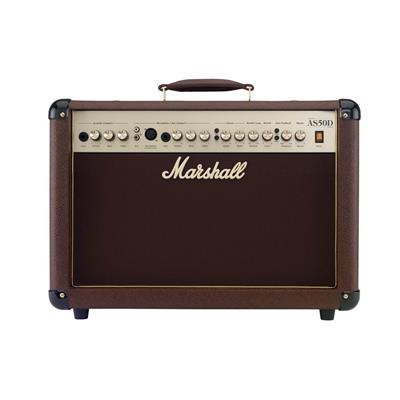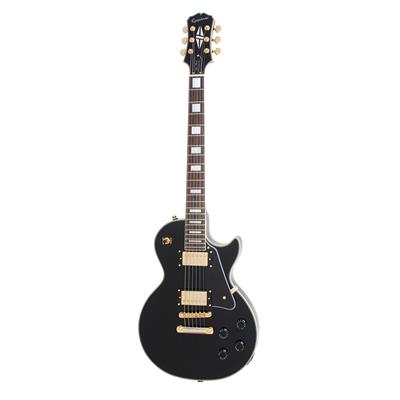All the bassists out there, unite, because I have some amazing news for you. Thanks to technological development, nowadays we have the option of using bass-dedicated pedals. Even though you might be a bit skeptical of this concept, it actually works wonders. Especially if you are a fan of chorus. This effect tends to thin out the low-end, which can be avoided by utilizing a pedal that was designed specifically for bass. If you are searching for such kind of unit, you are in the right place.
I was in your shoes a couple of years ago until I finally found my soulmate. It took me blood, sweat and tears to find the perfect device. That is why I decided to share my experience with you. This article will list down the best bass chorus pedals on the market and help you understand this effect and all its perks. Read on and see for yourself the amazing results the combination of bass and chorus can deliver.
What’s The Best Bass Chorus Pedal
| Image | Amplifier Model | ||
|---|---|---|---|
 | Dunlop MXR M83 Bass Chorus Deluxe |  (5 / 5) (5 / 5) | Check on Amazon |
 | MXR M234 Analog Chorus Pedal |  (4.9 / 5) (4.9 / 5) | Check on Amazon |
 | Boss CEB-3 Bass Chorus Pedal |  (4.8 / 5) (4.8 / 5) | Check on Amazon |
 | Electro-Harmonix BASS CLONE Chorus Pedal |  (4.8 / 5) (4.8 / 5) | Check on Amazon |
 | Joyo JF-05 Classic Chorus Pedal |  (4.6 / 5) (4.6 / 5) | Check on Amazon |
Dunlop MXR M83 Bass Chorus Deluxe

And once again, Dunlop has come out with a product that knows how to get the job done. M83 Bass Chorus Deluxe is a typical product with some treats under the hood. It has certain features that you will not see on a lot of pedals. I will cut to the chase and dive into the controls: Intensity alters the amount of the effect added to your signal, Rate modifies the speed of the chorus, Width shifts the phase of the LFO and makes the modulation happen, while Bass and Treble are EQs and allow you to control low-end and high-end spectrum of your sound. Additionally, Bass Chorus Deluxe has two buttons. Flanger gives you the option to apply a more intense modulation to your sound, while X-Over is the real gem. It decreases the modulation to 100Hz, making this pedal perfect for the bass. This way chorus will affect just the right frequencies and accentuate the bottom-end. Impressed? Well, there is more: there is an internal toggle switch that shifts between true bypass and TRS – stereo-hardware-bypass. The latter enables you to switch the signal in two and feed them in separate amps. In short, Bass Chorus Deluxe offers amazing performance and is packed with all the necessary features.
Pros:
- Great quality
- Excellent flanger
- Shimmery chorus
- Interesting features
Cons:
- X-over may be too intense in certain cases
MXR M234 Analog Chorus Pedal

What we have here is yet another quality product from MXR. M234 Analog Chorus (as you have probably guessed from the name) is an analog pedal which features Bucket Brigade circuit. This means that the unit produces the most organic and natural sound and brings to life ‘80s chorus. It has 5 knobs with dedicated functions: Level modifies the volume of the overall output and lets you control how loud the effect will be, Rate sets the speed of the chorus, Depth alters the intensity of the effect and allows you to dial in anything from subtle to “warbly”, while Low and High offer equalization and enable you to choose the frequencies that will be unaffected by the chorus. Analog chorus has Mono and Thru jacks, which is impressive at this price point. This pedal is very easy to use and dialing the perfect sound is almost a child’s play. It can be quite versatile as well, because, with the right tweaking, you can easily produce flanger. All in all, M234 offers the quality and features that you would expect from Dunlop.
Pros:
- Vintage chorus sound
- Organic tone
- Solid body
Cons:
- The LED is blindingly bright
- The knobs come off easily
Boss CEB-3 Bass Chorus Pedal

We all know that Boss products are the definition of quality. Their bodies are built to last and can withstand A LOT of abuse, which is nice if you are on the road all the time. The design on this one is quite standard for boss: we have blue chassis with large footswitch and four knobs mounted on the top part of the pedal. The controls are quite easy to grasp: E. Level (Effects Level) changes the volume of the effect, Low Filter allows you to choose the frequencies that will be affected by the chorus and accentuate the lower-end, Rate and Depth modify the speed and intensity of the effect. That’s it. You could easily say that CEB-3 is a typical deal, however, there is nothing bad about that. This pedal can deliver some of the greatest chorus and the fact that it was designed specifically for bass adds up to its benefits. All in all, this unit allows you to dial in the perfect amount of the effect but still maintain the original bass sound.
Pros:
- Excellent build quality
- Clear sound
- Thickens up the bass
Cons:
- It might not have enough depth for some
Electro-Harmonix BASS CLONE Chorus Pedal

EHX always strives to amaze its customers with the products that perform amazing both on stage and in studio. Bass Clone is no exception to that rule. It has a simple design, yet the features it offers are more than enough to dial in the perfect bass chorus. We have four knobs on the surface and a toggle switch, which allow you to shape different parameters of your sound. The first row of the knobs takes care of the chorus: Depth modifies the intensity of the effect, while Rate sets the speed. The second row is in charge of equalization: Bass changes the presence of low-end frequencies, while Treble manages high-end spectrum. With the help of these knobs, you can experiment with your sound and dial in some badass tones. But that is not all. Bass Clone has a two-way toggle switch (labelled as X-Over): in the up position, the effect “ignores” the bottom-end and maintains its original character; in the downward position, the effect hits the whole frequency range and gives you that sweet warble. This pedal delivers quality performance and an array of features in a compact, yet durable body.
Pros:
- Wide range of chorus
- Accentuates low-end
- Offers noiseless operation
Cons:
- Treble can have some hiss at maximum settings
- Rate transition could be a bit smoother
Joyo JF-05 Classic Chorus Pedal

If you are on a budget and are looking for something more affordable, then you have to try Joyo JF-05 Classic Chorus. This pedal is probably the best one for the price. Even though it is cheap, the build quality is great and the body feels quite solid. So you will not have to worry about it breaking in the middle of the gig. When it comes to controls, everything is straightforward and simple: we have Rate and Width knob. The former sets the speed of the effect and allows you to choose how crazy your chorus will be, while the latter shifts the LFO and it is basically the boss of modulation. It is true, though, that the pedal enhances the volume of the original signal and there is no knob to take care of it. However, it is not that big of a deal. All in all, JF-05 Classic Chorus is the best chorus pedal for the price and I am sure, you will not be disappointed.
Pros:
- Extremely affordable
- Great build quality
- Bright chorus
Cons:
- Does not have a volume or mix knobs
- Slight jump in volume is noticeable when the pedal is on
What is a chorus pedal?
You might already know this, but there is no harm in revising things. Plus, I am sure there are a lot of you who know what this effect is by ear, but cannot articulate what it does and how it does that. So let’s jump into explaining what is a chorus pedal.
This effect belongs to the family of modulation. This means that your signal has to go through certain alterations in order for the desired sound to be produced. Chorus, in particular, splits your signal in two. The first half remains the same, while the second half is shifted in pitch, then they are combined again and are perceived as one. The affected sound is thicker in nature, has more texture and basically sounds like a 12-string electric guitar. Chorus was the star of the show in ‘80s and has lost its popularity since then. However, the musicians who go nuts for this effect still exist and employ it in the most professional way.
The easiest way to produce this effect is by purchasing a chorus pedal. It uses a LFO (low frequency oscillator) circuit, which splits the signal and shifts the phase of it. Such kind of pedals can be found in every price range and are quite easy to use (more on that later).
Why would you need a bass dedicated chorus pedal?
The basics of bass chorus pedal are quite similar to the one for an electric guitar. However, there is one significant difference. Bass dedicated chorus pedals are designed in a way that accentuates the low-end frequencies, meaning that the character of your instrument will not be lost. But rather, the effect will add richness to your tone. Pedals of this ilk come with the option of maintaining the low-end untouched, while affecting the rest of the frequency spectrum. You might also have the chance to affect the whole range. One way or another, bass chorus pedals make sure that the bass sound is not overlapped by the effect.
It is true though, that electric guitar chorus pedals can be used with bass as well. But there are several things to keep in mind. As I have already mentioned, guitar pedals sometimes tend to thin out the bottom-end, which will detriment the bass sound and make the usage of the effect nonsensical. In order for the guitar pedal to work with bass, it should have some sort of blend option. This way you will be able to mix the original bass signal with the affected one, thus maintain the bottom-end perfectly. Another way of working with guitar pedals is to use equalization. In this case, you should increase the bass frequencies to the level that will amplify the bass response. One way or another, such pedals are totally workable, but I would still recommend splurging on bass dedicated ones.
Bass chorus features
Chorus is one of those effects that produces different sound with each and every tweak of the knob. It can go from shimmery lushes to intense flange to vibrato-like tones very easily, which means it offers a great deal of versatility. In order to master this effect and explore all the sonic possibilities it creates, you should have certain features on hand. Now I am going to discuss the ones that play an integral role in producing that sweet ‘80s chorus that still mesmerizes so many musicians.
First things first, the control that participates in generating any effect is the Volume or Level knob. It might seem like a minor thing, but it has a huge impact on the final results. Imagine that you are listening to your favorite band and the sound of their bass keeps jumping up and down. I am pretty sure you would not enjoy that. Volume knob does not affect the chorus itself, however it balances out the output and makes sure that all the notes are at the same level. Once again this is the case where even the smallest details make a lot of difference.
Let’s move on to the Rate. This one sets the speed of your chorus. This feature is important because it determines how crazy the effect will be. At higher settings, it can turn your chorus into a subtle vibrato and completely alter the ultimate sound. Having the option of changing the rate of your effect gives you flexibility and contributes to the versatility of the pedal.
Then we have the Depth (a.k.a. Width), which modifies the intensity of the chorus. The higher you set this feature, the more effect will be added to your sound. This is especially important in terms of bass, since it can be easily ruined with overdose.
These three features are the basics that contribute to creating the chorus effect. Certain models offer some additional controls. You might have some sort of EQ, such as Bass and Treble, which is quite important for accentuating the low-end spectrum of your instrument. Some models even offer Flanger or Phaser effects along with the chorus, while some allow you to split the signal and feed it to two amps. Even though certain models might have a single knob (which can be perfectly enough for your needs), it is always good to have the option of tweaking as much parameters as possible. One way or another, with these features, dialing in the most vintage sounds is a piece of cake.
Conclusion
Congratulations, my friend, you have made it to the end. You have successfully traveled through the world of bass chorus, have taken a look on the best bass chorus pedals and virtually experienced playing unique sounds with these two masterpieces of technology. It was quite a journey, don’t you agree? I hope the information I provided was not too overwhelming. I tried my best not to beat around the bush and get straight to the point. I will convince myself that I succeeded. I am happy that you are searching for the bass chorus, because you are on the right path. Once you get hooked on ‘80s sounds, there is no going back! So good luck my friend and let the vintage vibes intervene into every part of your life!
Related buyer’s guides







